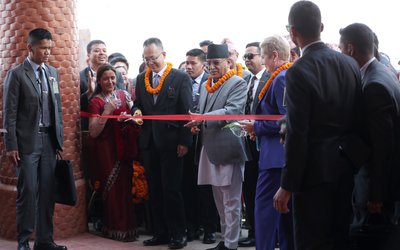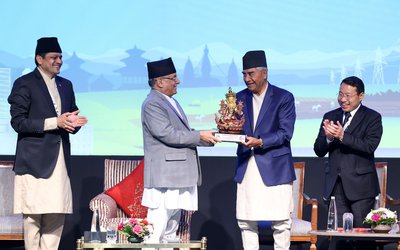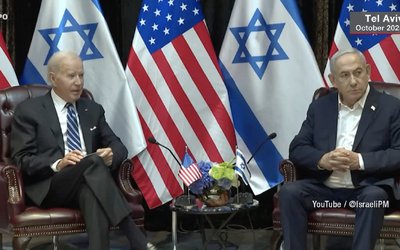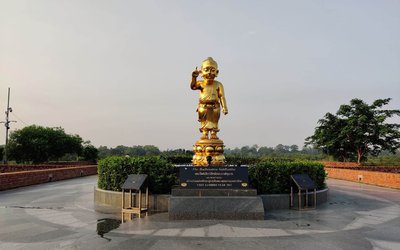As a passionate believer in the cosmopolitan ecumenism of the United Nations, it grieves me greatly to pen this essay sitting in an UNESCO café in Paris. The UN is a clumsy giant, but then I am also a great believer in the virtues of clumsy institutions: they survive and evolve. It is, instead, the neat but rigid ones that collapse and die due to their brittleness, much as the former Soviet Union did. In these globalized times of great change, the UN is also the only legitimate global institutional commons that humankind has to debate and democratically decide collective courses of corrective action.
The sadness comes from the UN’s latest failure in Nepal, a tragedy that need not have been. The UN system had been misused in the past by international hegemons to force their self-centered policies onto the rest of us, especially in the developing, decolonized or “Second World” countries. But super power unilateralism had been too discredited, we thought, to be seriously worried about in the twenty-first century. How wrong we were! It survives as a regrouped syndicate that self-styles itself “the international community” and its warped views of what the global order should be harkens back to the hegemonic 1950s, perhaps even earlier to the colonial missionary zeal of the 19th Century. In its latest incarnation, it has come piggy-backing on the hegemonic ambitions of regional powers; and the UN has found itself as another unwitting piggy-wiggy.
It must be admitted that the UN’s political peacekeeping mission in Nepal, the much-maligned UNMIN, essentially failed in its mission: while the ceasefire is holding, mainly because the Nepal Army has maintained the discipline of remaining quarantined in barracks, neither the peace process nor the political framework needed to keep it sustained in the future is seen anywhere on the horizon. Furthermore, there have been as effective ceasefires in the past but neither those nor the current one are due to UN efforts. The UNMIN was brought in to buttress a flawed appeasement of insurgents through a fairly fraudulent 12-point Delhi-midwifed political wheeling-dealing that none of the actors had any intention of honouring.
For all the protagonists, the ostensibly warm welcome was only a “strategy” for other aims: exchanging ‘bullets only’ for ‘bullets and ballots’ for the Maoists, becoming unaccountable new rajas for the parliamentary parties, and erasing Nepali history and identity to facilitate control over Nepal’s resources and polity for the “international community”. Only the Monarchists seemed to appreciate the value of UNMIN. The indefatigable Nepali blogger Maila Baje wrote in Jan 15 2007: “By seizing direct control, King Gyanendra knew he was risking his throne. The monarchy may have lost the gamble, but the country hasn’t. The United Nations’ arrival as part of the peace process has ended New Delhi’s monopoly in its tiny northern neighbor.” By departing without completing the peace process, the UN too has fallen victim to hegemonic ambitions of upstart powers.
UNMIN’s original mandate was to provide a fig leaf of arms sequestration during the Constituent Assembly elections. And we know what a sham that was after the Shaktikhor videotape exposé! Despite valiant rationalization efforts to the contrary by starry-eyed, primarily romantic EuroAmerican boutique Left in reports of the International Crisis Group as well as in the latest (Winter 2010) European Bulletin of Himalayan Research, it is too well-known even by ordinary villagers that real fighters and their effective arms such as those that downed Nepal army helicopters never came into the cantonments, and even those that did were seen moving about freely all over the country. Since more fig leaves were needed to cover a shameless process, UNMIN’s mandate was repeatedly extended; but all the haberdashery of New York could not cover a naked emperor.
As the 12-point Delhi architecture began unraveling, UNMIN found itself the target of all the protagonists venting their frustrations, arguing that they had been hoodwinked by the others. Today Nepal has gone back politically to 2002, with bickering political parties unable and unwilling to do what they promised and were mandated to do. Even that mandate ran out in May 2010 and an inherently intractable Loktantrick impasse stares the country in the eye even as it lurches from one political accident to another. The Mughlani wheeling-dealing envisaged taming their erstwhile Chakrata wards much as a wild elephant is tamed by two domesticated ones. Unfortunately, the wild one became the dominant one after the CA elections and ad hocism began to replace the collapsing political architecture. In the unraveling, the first pillar to go was the keystone “government by consensus” enshrined in the interim constitution. Competitive politics that followed ensured not only mal-governance but no consensus on the new constitution’s architecture as well. Currently, the two domesticated elephants, the Kangress and the UML as well as their siblings, are using their combined brute force to marginalized the Maoists, quite successfully so far, but in the process debasing the idea of civilized parliamentary politics and the very raison d’être of the CA.
It does not require an astute political analyst to understand that one party with arms (believing in violence as a legitimate political means to full political control) cannot be faced by others without it, unless there was a neutral army to back them. But they were, unlike BP Koirala, short-sighted enough to join the Mughlani-manipulated bandwagon demonizing the monarchy and the army. They became party to improperly removing the monarchy but soon found out that they need the army more than ever. In the process, as belatedly admitted by Ian Martin in the above-mentioned Himalayan Bulletin, “the end of palace control of the army has left it more autonomous and unaccountable than ever.” Welcome to the Autonomous Peoples Republic of Nepal Army in New Nepal!
Martin’s successor Karin Landgren was unfairly criticized for saying in her last Security Council briefing what all the political leaders have been saying in private and in public about the impending final collapse of the November 2005 architecture. But parsing her speech shows that the UN came into a flawed process and left a bigger mess behind. She and the UN should actually be criticized for reifying it as “dramatic political gains” when the reality Nepal now faces is the aftermath of “dramatic political adventurism” by the parties and the international community.Please type your text here. And the UNMIN personnel themselves contributed enough to that mess. Ian Martin was unable to count the actual number of insurgents, and the Israelis held that against him in Gaza. Leaving aside the intractable but vital question of who is a guerilla, how many were there and just where they are now, only one example of UNMIN-created imbroglio is enough to give an ‘F’ to this mission. In January 2010, some 4000 fighters were discharged from the UNMIN cantonments as unqualified after spending over two years in paid ideological and military training. Of these, 3000 were minors in May 2006, but only 500 were under 18 when bid farewell. As the security expert Rajendra Thapa put it then, these unmarried and with no social responsibility disgruntled youth have now become incendiary matches spread all over Nepal, open to recruitment by any of the 106 armed groups active in this post-monarchy country. What kind of peace process have you left behind, UNMIN?
It does not require an astute political analyst to understand that one party with arms (believing in violence as a legitimate political means to full political control) cannot be faced by others without it, unless there was a neutral army to back them. But they were, unlike BP Koirala, short-sighted enough to join the Mughlani-manipulated bandwagon demonizing the monarchy and the army. They became party to improperly removing the monarchy but soon found out that they need the army more than ever. In the process, as belatedly admitted by Ian Martin in the above-mentioned Himalayan Bulletin, “the end of palace control of the army has left it more autonomous and unaccountable than ever.” Welcome to the Autonomous Peoples Republic of Nepal Army in New Nepal!
Martin’s successor Karin Landgren was unfairly criticized for saying in her last Security Council briefing what all the political leaders have been saying in private and in public about the impending final collapse of the November 2005 architecture. But parsing her speech shows that the UN came into a flawed process and left a bigger mess behind. She and the UN should actually be criticized for reifying it as “dramatic political gains” when the reality Nepal now faces is the aftermath of “dramatic political adventurism” by the parties and the international community.Please type your text here.
- QATAR AMIR’S STATE VISIT: Five Agreements
- Apr 28, 2024
- TANAHU HYDROPOWER PROEJCT: A Significant Achievement
- Apr 15, 2024
- AMBASSADOR HANAN GODAR: Sharing Pain With A Nepali Family
- Mar 30, 2024
- VISIT OF KfW AND EIB TO NEPAL : Mission Matters
- Mar 25, 2024
- NEPAL BRITAIN SOCIETY: Pratima Pande's Leadership
- Mar 24, 2024















